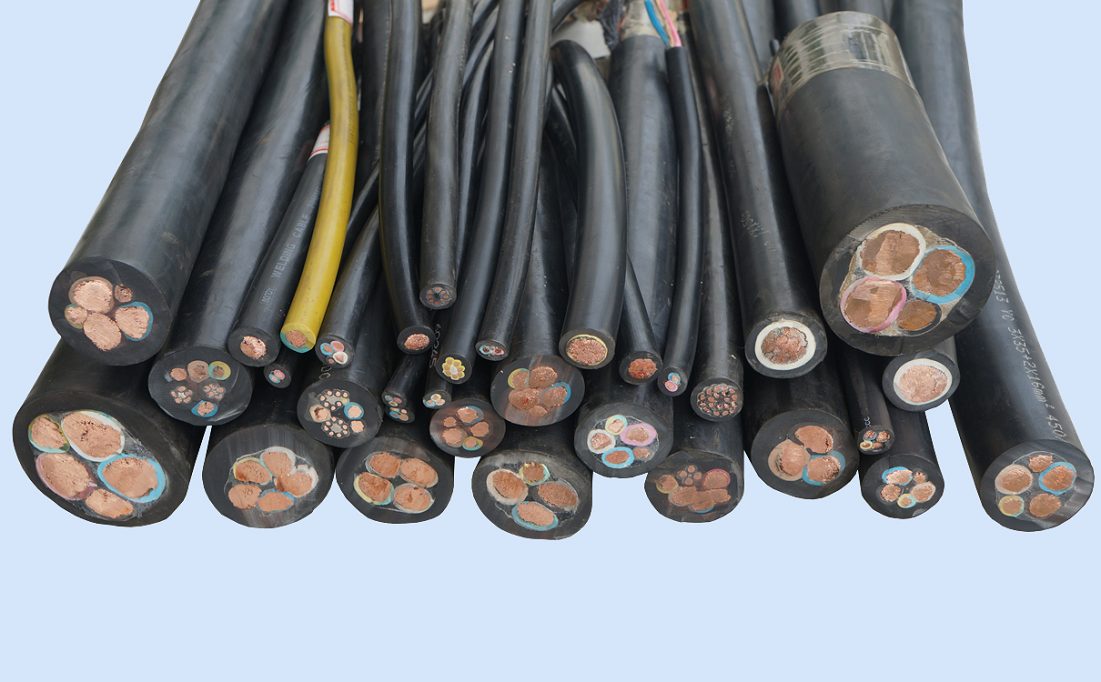
Today we are introducing the detailed description of high-voltage cables and overhead cables, zms cable editor will focus on the product structure characteristics and application areas to expand the detailed description.
Hope this article can help you with the cable purchase.
High voltage cable is a kind of power cable, which is used to transmit power cables between 1kv-1000kv, mostly used for power transmission and distribution.
As long as you open any manual that introduces wire and cable products, several tome chapters will appear in the catalog area. Conductor, insulation, metal layer, non-metal layer, and put it in one go, a long-winded posture to describe each knowledge point in detail.
The components of high-voltage cables from inside to outside include conductor, insulation, inner sheath, filling material (armored), and outer insulation.
Of course, armored high-voltage cables are mainly used for underground burial, which can resist high-intensity compression on the ground and prevent damage from other external forces.
The product for AC-rated voltage 35KV and below for transmission and distribution can be used for fixed granary lines, the maximum long-term working temperature of the cable conductor is 90 degrees, short circuit (the longest time does not exceed 5S), the maximum temperature of the cable conductor does not exceed 250 degrees.
NA-YJV NB-YJV: Cross-linked polyethylene insulated PVC sheathed class A(B) fire-resistant power cable, which can be laid indoors, in tunnels, and pipelines where fire resistance is required.
WDNA-YJY23 WDNB-YJY23: Cross-linked polyethylene insulation steel belt armored polyolefin sheath A (B) class halogen-free low smoke and fire-resistant power cable, suitable for halogen-free low smoke and fire-resistant requirements when buried, not suitable for laying in the pipe.
ZA-YJV22/ZA-YJLV22/ZB-YJV22/ZB-YJLV22/ZC-YJV22/ZC-YJLV22: Cross-linked polyethylene insulated steel belt armored PVC sheathed A(B, C) flame retardant power cable, suitable for buried laying when flame retardant is required, not suitable for laying in pipes.
VV22 VLV22: Copper (aluminum) core PVC insulated steel belt armored PVC sheathed power cable is laid indoors, in tunnels, cable trenches, and direct buried soil, and the cable can withstand pressure and other external forces.
VV VLV: Copper (aluminum) core PVC insulated PVC sheathed power cable is laid indoors, in tunnels and pipelines, or in outdoor brackets and is not subject to pressure or mechanical external forces.
Overhead cable, known as overhead insulated cable, is an overhead conductor equipped with an insulation layer and protective sheath, manufactured using a special cable similar to the production process of cross-linked cable, which is a new transmission method between overhead conductor and underground cable.
Overhead power lines are composed of line towers, conductors, insulators, fixtures, ties, tower foundations, grounding devices, etc., erected above the ground for the transmission of electrical energy between the two points of the system.
Overhead cables are single-core and can be divided into hard aluminum wire structure, hard drawn copper wire structure, aluminum alloy wire structure, steel core or aluminum alloy core support structure, and self-supporting three-core ripple structure (the core can be hard aluminum or hard copper wire), etc. according to their structure.
There are two types of conductors, one we usually call a bare conductor and one called an insulated conductor.
Among them, bare wire is currently the most commonly used, insulated wire is basically used in 10kV and below on the distribution line.
Commonly used wires are basically "round concentric stranded overhead wire", this statement is the norm, referring to the vast majority of bare wire, the most commonly used bare wire is steel-core aluminum stranded wire.
The middle part of the steel-core aluminum strand is the steel core, the main purpose is to withstand the various forces on the wire.
The outer part is the aluminum strand, the main use is to transport electricity, which is the core role of the wire.
Rated Voltage: 0.6/1KV, 10KV, and 35KV respectively.
Cable Laying Temperature: not lower than -20℃, and run no more than 5S in short circuit.
Cable High Temperature: cross-linked polyethylene insulation 250℃, high-density polyethylene sk insulation 150℃, polyvinyl chloride insulation 160℃.
Conductor Allowable Working Temperature: PVC insulation should not exceed 70℃, polyethylene should not exceed 70℃, and cross-linked polyethylene insulation should not exceed 90℃.
Cable Bending Radius: single-core should be not less than 15 times the outer diameter of the cable, and multi-core should be not less than 10 times the outer diameter of the cable.
JKV JKLV JKY JKLY JKYJ JKLYJ: copper, aluminum core PVC insulated overhead cable copper, aluminum core polyethylene insulated overhead cable copper, aluminum core cross-linked polyethylene insulated overhead cable, used for overhead fixed laying of lead wires, etc.
JKYJ JKLYJ JKTRYJ JKY JKLY JKTRY JKGYJ JKLGYJ: Copper, aluminum cross-linked polyethylene insulated overhead cable Soft copper core cross-linked polyethylene insulated overhead cable Copper, aluminum core polyethylene insulated overhead cable Soft copper core polyethylene insulated overhead cable Copper core stranded cross-linked polyethylene insulated overhead cable Aluminum core stranded cross-linked polyethylene insulated overhead cable.
Used for overhead fixed laying, soft copper core products for transformer lead-in. When the cable is overhead, the cable and trees should be considered to maintain a certain distance; when the cable is far away, allow frequent contact between the cable and trees. Steel-core overhead cables are used in mountainous areas and across rivers.
JKLY/B: Aluminum-core natural color cross-linked polyethylene insulated overhead cable for overhead fixed laying cable erection, the cable, and trees should be considered to maintain a certain distance.
When the cable is running, frequent contact between the cable and trees is allowed.
JKLYJ/Q JKLY/Q: Aluminum-core light cross-linked polyethylene insulated overhead cable Aluminum-core light polyethylene insulated overhead cable for overhead fixed laying When the cable is erected, a certain distance between the cable and trees should be considered.
When the cable is in operation, the cable and the trees are allowed to come into contact for a short time.
Above is the information about high voltage cable and overhead cable, if you need to know more about other cable products, welcome to consult.